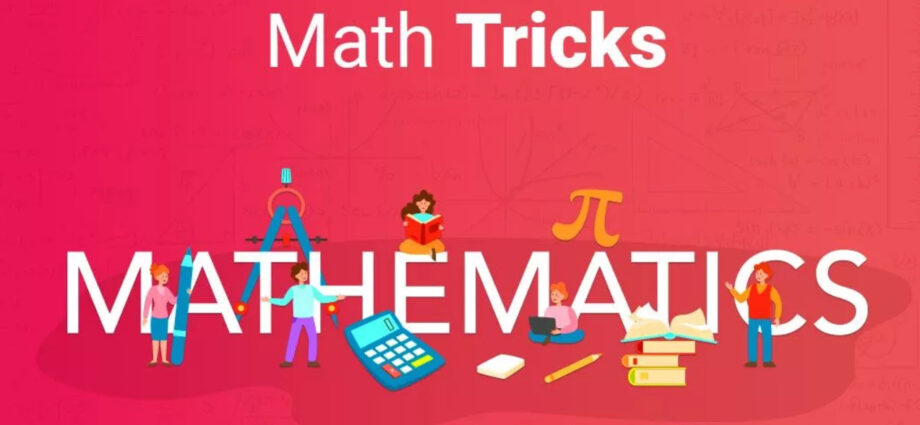Introduction
Mathematics is a field that often perplexes and captivates us with its intricate puzzles and concepts. From basic arithmetic to complex calculus, mathematics has the power to unlock the mysteries of the universe. Alongside its fundamental principles, mathematics also holds an array of tricks that astound and challenge our understanding. In this article, we explore the greatest trick in mathematics, its history, significance, and impact on mathematical thinking.
Understanding Mathematics
Before delving into the world of mathematical tricks, it is essential to grasp the significance of mathematics itself. Mathematics is the language of patterns, relationships, and structures. It allows us to solve problems, make predictions, and understand the fundamental laws that govern our world. Through logical reasoning and precise calculations, mathematics unveils the hidden secrets of nature and human ingenuity.
The Power of Mathematical Tricks
Mathematical tricks serve as shortcuts or alternative methods to solve complex problems efficiently. These tricks leverage the inherent patterns and properties of numbers, equations, and mathematical concepts. They often provide unexpected and elegant solutions, saving time and effort in mathematical calculations.
The Concept of Trickery
Trickery in mathematics does not imply deceit or fraudulence but rather the ability to perceive and manipulate mathematical patterns in unconventional ways. It involves using creative thinking, outside-the-box strategies, and unconventional approaches to problem-solving. Mathematical tricks challenge conventional methods and open doors to new perspectives and insights.
The Greatest Trick in Mathematics
Among the numerous mathematical tricks, one stands out as the greatest—the concept of zero. The notion of zero, initially developed by ancient civilizations such as the Mayans and Indians, revolutionized mathematics and paved the way for countless advancements. Zero serves as the cornerstone for arithmetic, algebra, calculus, and other branches of mathematics.
History of the Greatest Trick
The history of the greatest mathematical trick traces back to ancient times. The concept of zero emerged independently in different cultures across the globe. In ancient Mesopotamia, the Sumerians employed a placeholder system, utilizing two distinct symbols for numbers and empty spaces to represent zero. In India, mathematicians introduced the concept of zero as part of the decimal place-value numeral system.
How the Trick Works
The trick of zero lies in its ability to act as a placeholder and signify the absence of a value or quantity. It allows for the development of positional notation, where the position of a digit determines its value. This breakthrough enabled more efficient calculations, precise measurements, and the development of algebraic equations, revolutionizing mathematics as a whole.
Significance of the Trick
The concept of zero fundamentally changed the way we approach mathematics. It provided a solid foundation for numerical systems, making calculations more manageable, and opening up new avenues for mathematical exploration. Without zero, the field of mathematics would lack the sophistication and precision it possesses today.
Applications of the Trick
The influence of the trick of zero extends far beyond the realm of mathematics. It plays a crucial role in various disciplines, including physics, engineering, computer science, and finance. The binary system, which underlies modern computer technology, heavily relies on the concept of zero. Moreover, zero is integral to calculus, enabling the study of rates of change and infinitesimal quantities.
Criticisms and Controversies
Like any significant mathematical concept, the trick of zero has faced criticism and controversy throughout history. In some cultures, the introduction of zero was met with resistance, as it challenged existing religious and philosophical beliefs. Additionally, the division by zero poses challenges and contradictions, leading to debates and ongoing research in the field of mathematics.
Impact on Mathematical Thinking
The introduction of the trick of zero and the subsequent development of mathematical tricks and techniques have had a profound impact on mathematical thinking. It encourages creativity, critical thinking, and problem-solving skills. By exploring mathematical tricks, students and mathematicians alike can cultivate a deeper understanding of the subject and discover new avenues for exploration.
Importance of Mathematical Tricks
Mathematical tricks serve as powerful tools to engage students and foster a love for mathematics. They provide alternative methods of problem-solving, promoting flexibility and adaptability in mathematical thinking. Furthermore, these tricks highlight the beauty and elegance of mathematics, inspiring future generations to pursue the field and unravel its mysteries.
Other Fascinating Tricks
While the trick of zero holds the title of the greatest mathematical trick, the field is filled with numerous other captivating tricks. From the Fibonacci sequence to the magic square, each trick offers its unique charm and mathematical intricacy. Exploring these tricks not only expands our knowledge but also adds a sense of wonder to the world of mathematics.
Conclusion
In conclusion, the greatest trick in mathematics lies in the concept of zero. This remarkable mathematical invention revolutionized the field, enabling the development of sophisticated numerical systems, precise calculations, and profound insights. The trick of zero serves as a testament to the power of mathematical thinking and its ability to reshape our understanding of the world.











